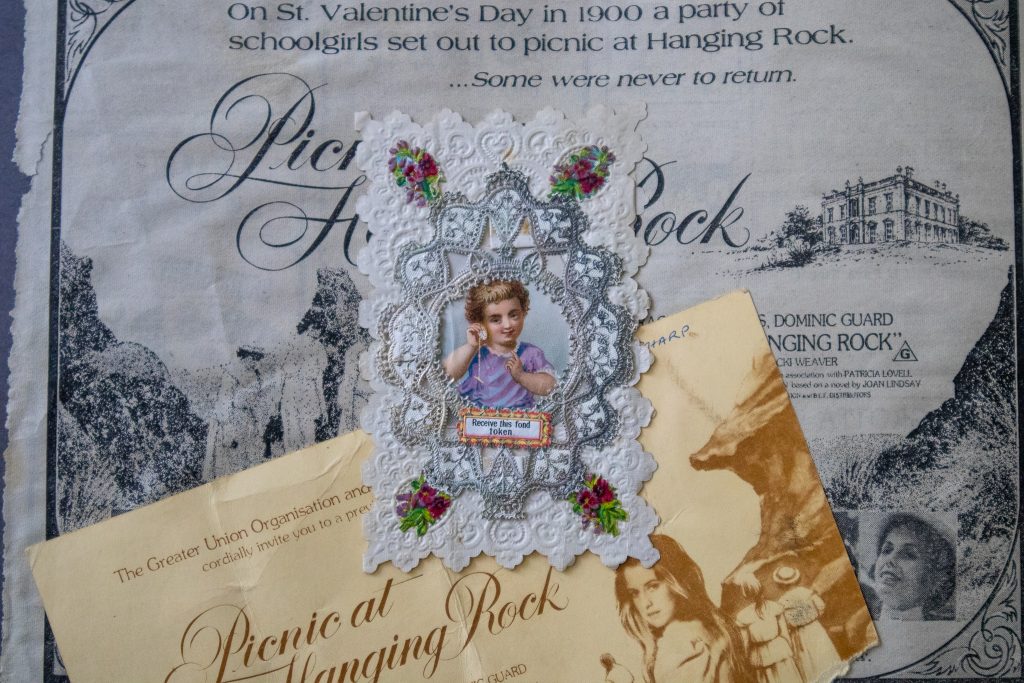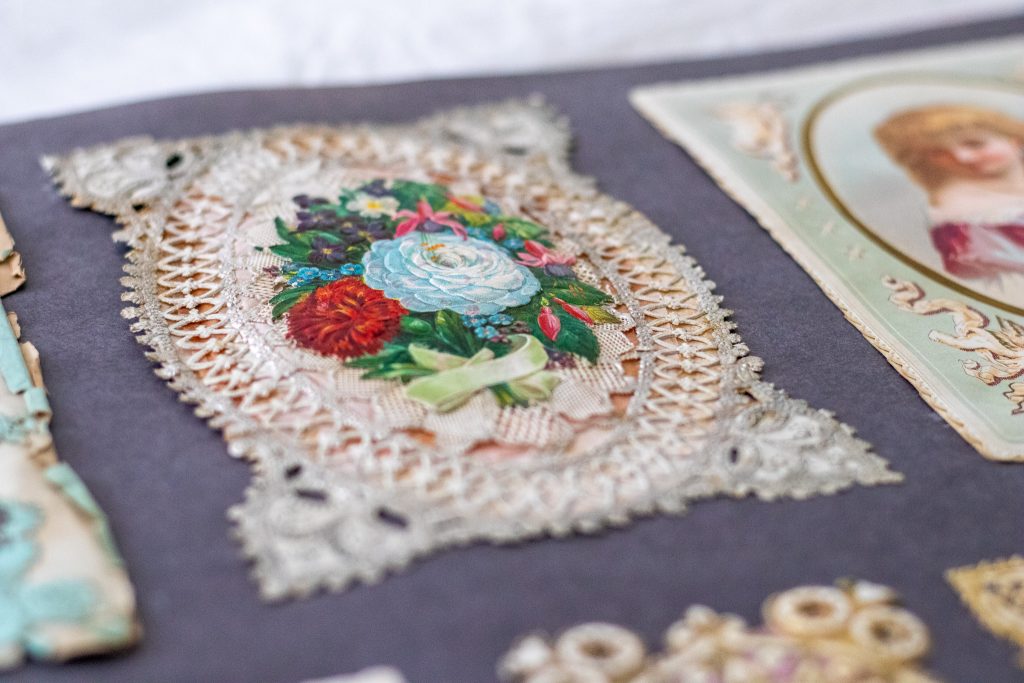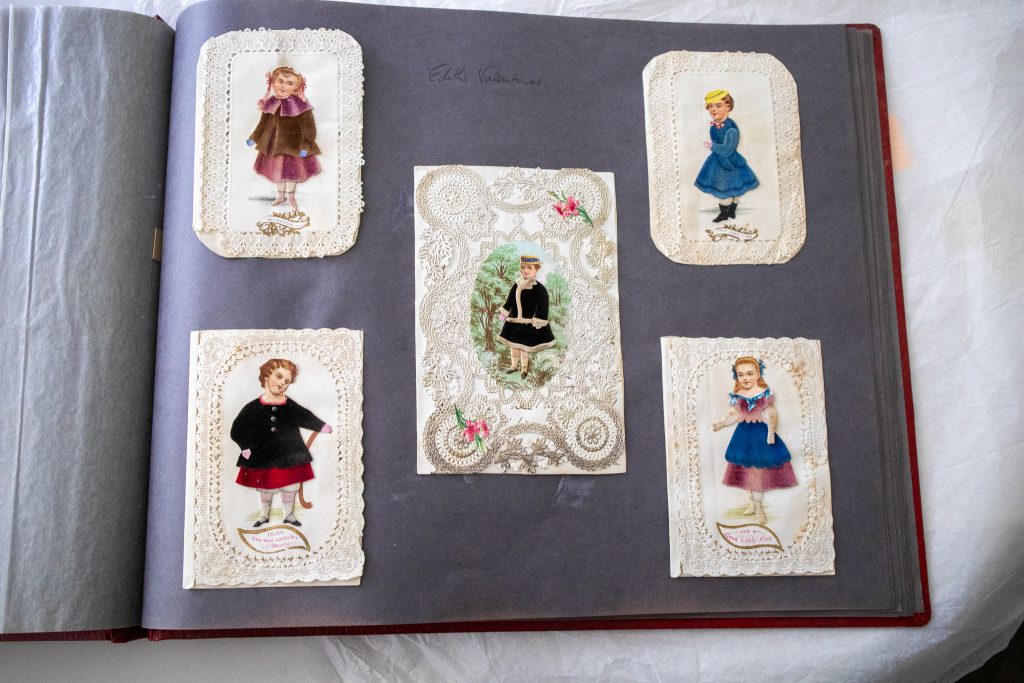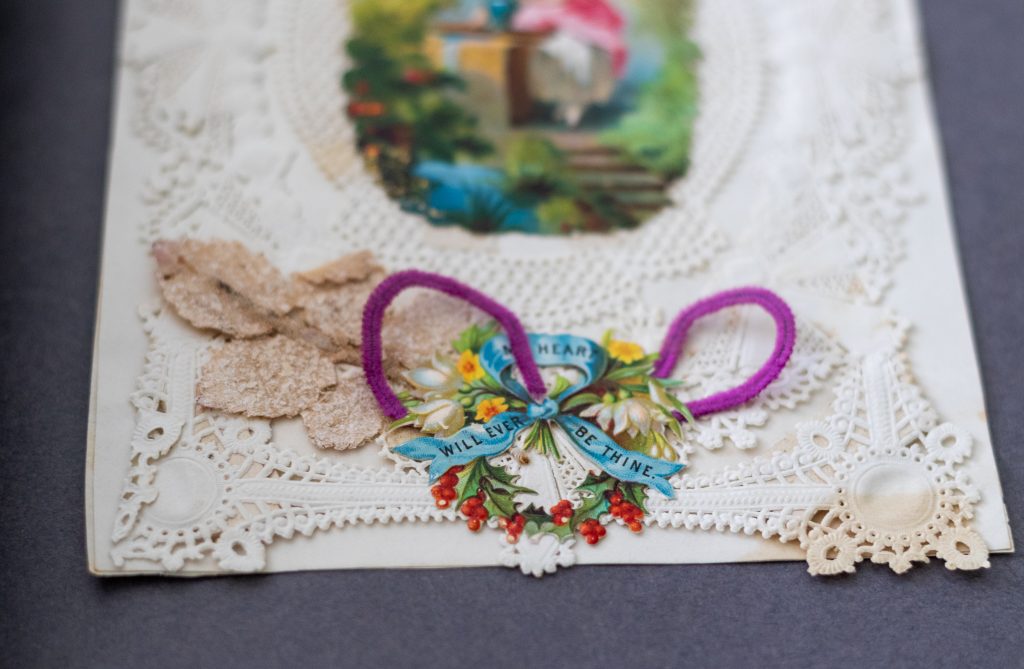The novelist and artist Joan Lindsay (1896 - 1984) best known for writing Picnic at Hanging Rock, collected Valentine’s Day cards – unique Victorian-era items that are equal parts delicate, beautiful, and strange. She compiled her collection in a red leather album which was gifted, together with the contents of Mulberry Hill, to the National Trust by Sir Daryl and Lady Lindsay.
The Valentine’s Day cards in the album are complex items typically made from composite materials including paper, card, cloth, metal foil, lace, and even mock feathers. The materials were layered, punched, and embossed – some had moving parts and others had raised components creating a 3D effect. They are often gayly printed, and some include personalised messages like ‘You are a dear little Jit!’ While fragile from the onset, they had weakened with age, and many had suffered tears, creases, and other minor damages over the intervening years.
A research thesis by University of Melbourne conservation student Keira Hudson identified issues effecting the ongoing preservation of the album, and it was brought to Grimwade Conservation Services early in 2023 for conservation treatment, generously funded by the Copland Foundation.
Conservation in Action
The issues identified in the album were:
- Previous and possibly active pest infestation.
- Over-stuffing of album causing stress to the binding and distortion of the covers.
- Physical damage to individual inclusions and failing methods of attachment.
A treatment plan was proposed beginning with anoxic treatment to eradicate any pests in the album. This involved creating an oxygen-free environment inside a bag constructed of special impermeable plastic, which was flushed with nitrogen to remove all the air. The album was left in this environment for several weeks to kill any insects, eggs, and larvae in the album.
Once removed from the anoxic chamber the album was disbound – a very straight-forward process since the pages were held together with simple brass screw posts which could be easily screwed apart to release the individual pages.
The individual cards were cleaned, folds were flattened, and tears repaired using an ultra-fine Japanese tissue called Tengu which is near to invisible when adhered with wheat starch paste. The cards remain fragile but are now safe to be handled carefully. Wheat starch paste was used as the adhesive as it is a durable and strong adhesive but also easy to remove should the need ever arise.
In this way, minimal new material was introduced to stabilise the cards. Indeed, the most significant new material inserted into the album was the replacement of the old, discoloured (and often torn) interleaving tissue with a new acid-free equivalent.
With the cards repaired and the pages unbound, it was the perfect opportunity to take high-resolution digital images of all the cards for documentation and interpretation purposes. The album was rebound by replacing the original posts. The completion of the conservation work saw the album housed within a custom-made archival box to protect it in storage.
This significant object is now conserved for the enjoyment of future generations and Mulberry Hill visitors are able to see it on display at the My Day of Days installation (Open until 31 March 2024).
The National Trust Australia (Victoria) gratefully acknowledges the support of the Copland Foundation for this conservation project.
This article was written by Peter Mitchelson, Paper & Book Conservator Grimwade Conservation Services, and was originally published in the National Trust’s Spring 2023 Magazine.





 Twitter
Twitter Facebook
Facebook Linkedin
Linkedin Email
Email